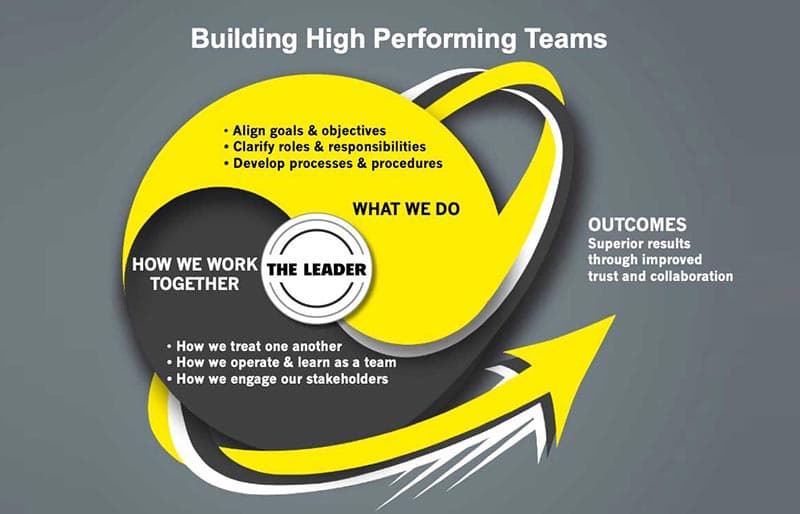
Leading Teams
At the center of high performing teams are skilled leaders. Those who can use a variety of styles depending on the situation. However, it's often assumed that a democratic, participative style works best. Our findings, though, may surprise you!
We expected to find that leaders of high-performing teams would emphasize how they displayed an engaging, highly participative, democratic leadership style. A style that empowered their team. While this was true, what truly differentiated high-performing team leaders was their ability to gauge when the team needed more direction. These leaders would then step up, and, become directive and decisive.
Members of high-performing teams described leaders who were not afraid to tell them exactly what they wanted and exactly how priorities needed to be aligned. Boundaries and expectations were clear.
One area where many high performing leaders became authoritative was in team meetings. One leader told us that he did not tolerate anyone raising their voice in meetings. Another told us that multi-tasking was unacceptable in her virtual meetings. Her team members concurred. It became a habit – an especially important team operating norm.
Team leaders on average teams were typically more democratic and more tentative. Rather than taking proactive measures and steering their team in a constructive and proactive direction, they frequently told us about crises and firefighting situations. Members told us they often got stuck in a cycle of consensus when what they really needed was for their team leader to decide. Building consensus slowed them down. They were frustrated.
The ability to dial up a directive style is not easy. Telling your work friends and colleagues what they should do in a way that engages them requires finesse and a lot of emotional and social intelligence.
We found from our research that leaders of top performing teams invested time getting to know each member of their team. They also implemented team development meetings where members were encouraged to mix, mingle, and get to know one another. These Get-to-Gather meetings helped build the trust, psychological safety, and the social capital needed to fight the fires, and meet the tight deadlines that often popped up. These team building investments built trust and gave the leader the license to act with authority when necessary… to be Directive.
The ability to act authoritatively and decisively was most strongly correlated with the performance of top teams. However, these leaders also demonstrated other capabilities. They were skilled coaches; they encouraged their teams to address problems proactively; they cared about developing their team's culture; and they were particularly adept at managing the team's boundaries and key stakeholders. We will address each one of these team leader behaviors and practices in future blogs.
Leading teams is challenging. Sometimes, it's fun. Occasionally, it's exhilarating. However, too often, it's not an easy, relaxing walk in the park. Leaders who focus their teams on both the What and the How (as we described in our previous blog, The Yin and Yang of Teams) increase their chances for success.
We at Legacy Teams have deep skills and a strong track record developing team leaders and their teams. We would love to talk with you about your team(s) challenges and opportunities. Take the initiative. Be proactive. Call us today for a consultation.
All the best. Onward and upwards…